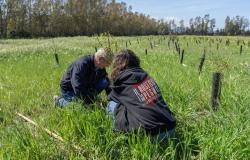When a tragedy such as a fire, an earthquake or a road accident occurs, our hope is that rescuers, whether civil protection workers or firefighters, arrive promptly at the scene of the emergency. However, these heroes are not always able to arrive in time to save lives, which can trigger emotions and judgments unjust towards those who put their lives at risk to save the lives of others. It is essential to understand the challenges these professionals face and offer them the support necessary to improve their operating conditions.
A recent and painful example of this reality is the tragic story of the three boys who tried to resist the fury of the river Natisone, hugging each other tightly, clinging to a boulder while the river, swollen dramatically due to the bad weather, overwhelmed them. The three young people were then overwhelmed by the current just as rescuers were trying to reach them. The rope thrown to them failed to reach them and they disappeared in the raging waters. This event profoundly shook the community, raising questions and controversies. But rescue times can be influenced by various factors.
Logistics is one of the main challenges: distances, road conditions, traffic and remote location emergencies can slow down interventions. The resources available are also crucial. Another aspect to consider is ongoing training and psychological support. Operators are often exposed to situations of high stress and danger, which require technical skills and emotional resilience. Adequate training and ongoing psychological support are essential to prepare and support these professionals in critical situations.
It is essential that the community understands the difficulties inherent in the work of rescuers and supports them, rather than judging them. Creating an open dialogue between citizens and emergency services can improve mutual understanding and encourage the adoption of preventive measures that reduce the number and severity of emergencies. Political and financial support is crucial: investing in civil protection and firefighters means investing in community safety. The provision of adequate resources, the modernization of equipment and the improvement of infrastructure are essential steps to guarantee increasingly rapid and effective interventions.
Civil protection operators and firefighters they are true heroes, often silent and invisible, who dedicate their lives to the service of others. Despite their ongoing efforts, logistical, structural and operational challenges can sometimes delay relief efforts, with tragic consequences. The story of the three boys in the river represents a painful testimony to the difficulties that these professionals have to face. Instead of judging them, it is our duty to understand them, support them and do what we can to improve the conditions in which they operate. Only through collaboration and mutual support can we be confident of building a safer and more resilient society, in which every human life can be protected effectively and promptly.
Despite the heroic efforts of the rescue teams, one of the boys is still alive missing, reminding us how important it is to provide our professionals with the tools and resources necessary to deal with complex emergencies. It is essential to promote a culture of prevention and risk awareness. Educating the population about the dangers associated with natural environments and safety measures can make the difference between life and death. Schools, families and institutions should collaborate to spread this knowledge, so that similar episodes do not happen again.
Finally, we cannot forget the pain of the families affected by this tragedy. The loss of a loved one is devastating, and every gesture of solidarity can make a big difference. Let us recognize the value of their pain and support them in this difficult journey, remembering that behind every piece of news there is a complex and delicate human reality. Only in this way will we be able to truly understand the importance of life and our humanity, and work together to build a more empathetic and supportive society.
In your opinion, what concrete measures could be adopted to improve the logistics and speed of rescue interventions in remote areas? And how can we help provide the psychological and training support necessary for rescuers to deal with situations of high stress and danger? What if it were possible to create a system of trained volunteers in every local community, could it really improve the speed and effectiveness of emergency relief?





